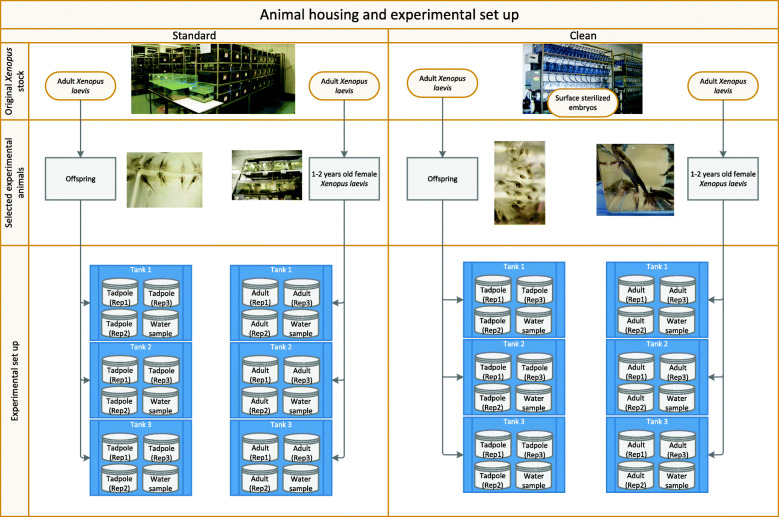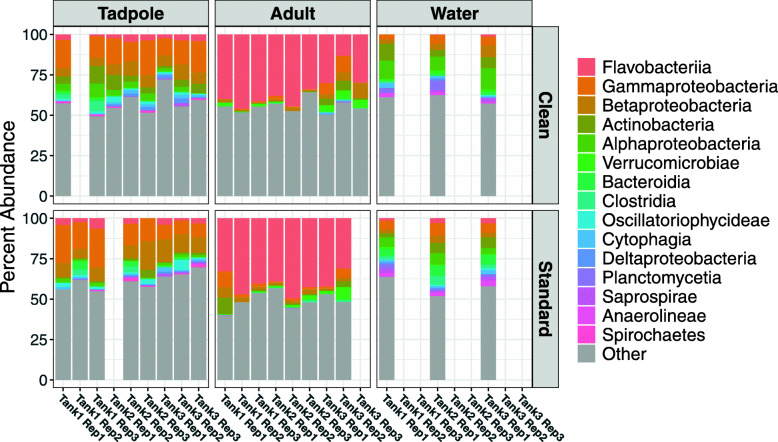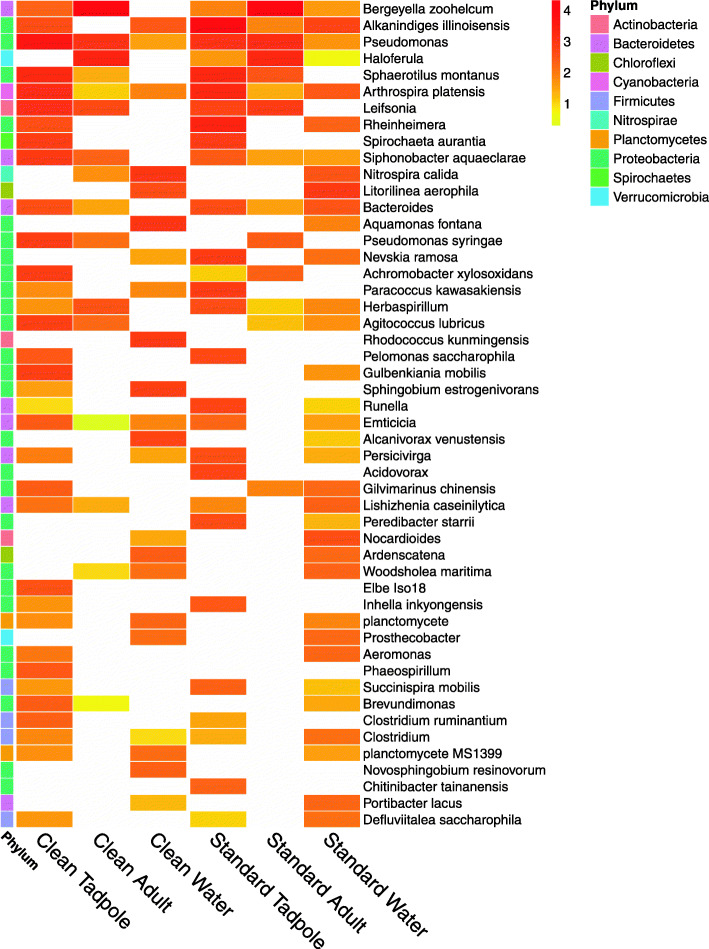The skin microbiome of Xenopus laevis and the effects of husbandry conditions
Maya Z Piccinni, Joy E M Watts, Marie Fourny, Matt Guille, Samuel C Robson
Anim Microbiome. 2021 Feb 5;3(1):17. doi: 10.1186/s42523-021-00080-w.
Click here to view article at Animal Microbiome.
Click here to view article at Pubmed.
Click here to view article on Xenbase.
Abstract
Background
Historically the main source of laboratory Xenopus laevis was the environment. The increase in genetically altered animals and evolving governmental constraints around using wild-caught animals for research has led to the establishment of resource centres that supply animals and reagents worldwide, such as the European Xenopus Resource Centre. In the last decade, centres were encouraged to keep animals in a “low microbial load” or “clean” state, where embryos are surface sterilized before entering the housing system; instead of the conventional, “standard” conditions where frogs and embryos are kept without prior surface treatment. Despite Xenopus laevis having been kept in captivity for almost a century, surprisingly little is known about the frogs as a holobiont and how changing the microbiome may affect resistance to disease. This study examines how the different treatment conditions, “clean” and “standard” husbandry in recirculating housing, affects the skin microbiome of tadpoles and female adults. This is particularly important when considering the potential for poor welfare caused by a change in husbandry method as animals move from resource centres to smaller research colonies.
Results
We found strong evidence for developmental control of the surface microbiome on Xenopus laevis; adults had extremely similar microbial communities independent of their housing, while both tadpole and environmental microbiome communities were less resilient and showed greater diversity.
Conclusions
Our findings suggest that the adult Xenopus laevis microbiome is controlled and selected by the host. This indicates that the surface microbiome of adult Xenopus laevis is stable and defined independently of the environment in which it is housed, suggesting that the use of clean husbandry conditions poses little risk to the skin microbiome when transferring adult frogs to research laboratories. This will have important implications for frog health applicable to Xenopus laevis research centres throughout the world.

Fig. 1. Experimental design. Schematic outlining the housing conditions, developmental stages, and experimental set up used in this experiment.

Fig. 4. Barplot showing the distribution of bacteria at the phylum level of taxonomy. In each case, the top 15 phyla are highlighted, with all remaining phyla shown in grey.

Fig. 6. Heatmap showing the top 50 species identified across the data set. OTU counts from biological replicates amongst the different replicate tanks were combined to give a single count, which was normalised so that all samples had the same total. Cells are coloured based on the percentage of the total OTU count (on a log10 scale), with more abundant OTUs shown in red.
Adapted with permission from Springer Nature on behalf of Animal Microbiome: Piccinni et al. (2021). The skin microbiome of Xenopus laevis and the effects of husbandry conditions. Anim Microbiome. 2021 Feb 5;3(1):17. doi: 10.1186/s42523-021-00080-w.
This work is licensed under a Creative Commons Attribution 4.0 International License. The images or other third party material in this article are included in the article’s Creative Commons license, unless indicated otherwise in the credit line; if the material is not included under the Creative Commons license, users will need to obtain permission from the license holder to reproduce the material. To view a copy of this license, visit http://creativecommons.org/licenses/by/4.0/
Last Updated: 2021-03-10